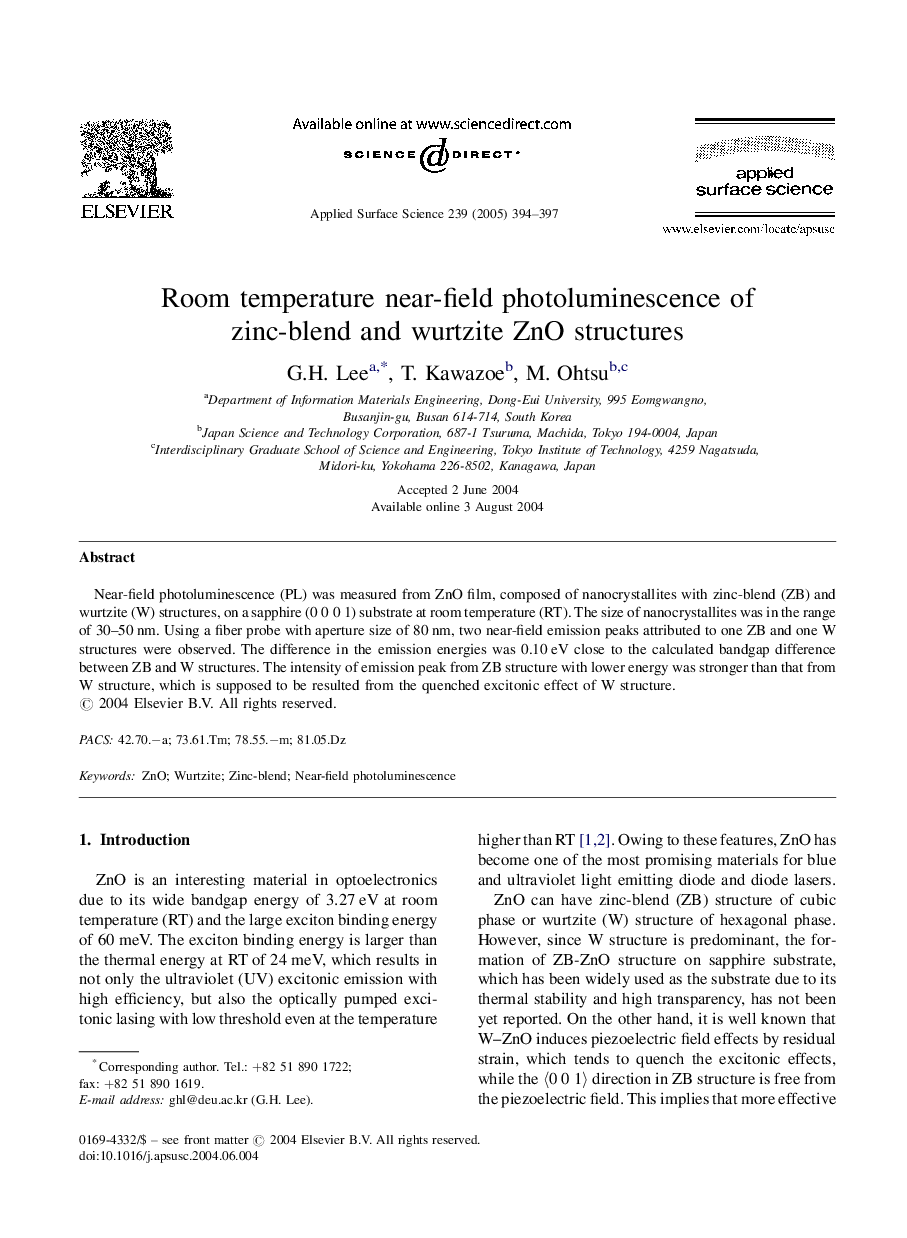| Article ID | Journal | Published Year | Pages | File Type |
|---|---|---|---|---|
| 9567748 | Applied Surface Science | 2005 | 4 Pages |
Abstract
Near-field photoluminescence (PL) was measured from ZnO film, composed of nanocrystallites with zinc-blend (ZB) and wurtzite (W) structures, on a sapphire (0Â 0Â 0Â 1) substrate at room temperature (RT). The size of nanocrystallites was in the range of 30-50Â nm. Using a fiber probe with aperture size of 80Â nm, two near-field emission peaks attributed to one ZB and one W structures were observed. The difference in the emission energies was 0.10Â eV close to the calculated bandgap difference between ZB and W structures. The intensity of emission peak from ZB structure with lower energy was stronger than that from W structure, which is supposed to be resulted from the quenched excitonic effect of W structure.
Related Topics
Physical Sciences and Engineering
Chemistry
Physical and Theoretical Chemistry
Authors
G.H. Lee, T. Kawazoe, M. Ohtsu,
